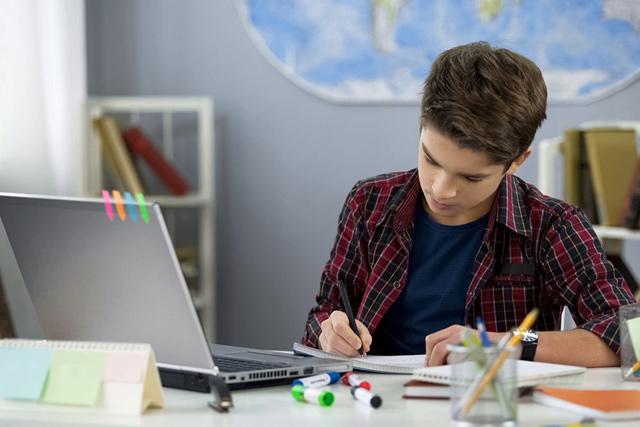You are here
Teachers assess outcomes of distance education
By Mays Ibrahim Mustafa - Oct 03,2021 - Last updated at Oct 03,2021
AMMAN — Following the Ministry of Education’s decision to reopen schools and the return to in-person education on September 1, the outcomes of distance learning have drawn mixed reactions from teachers.
Eman Nofal, a teacher at a private school, said that distance learning has taken a toll on students in the preliminary stage.
“They don’t have a solid educational foundation for us to build on,” Nofal told The Jordan Times, adding that they “have to take a step back and fix the outcomes of distance learning in order to move forward”.
Rakan Al Abade, a teacher at a public school, said that distance learning “did not accomplish any of its goals as pre-recorded classes isolated students from teachers”.
“Now, students are less active in the classroom. The educational process feels one-sided when it should be interactive,” said Abade.
Amal Al Sqoor, who is also a teacher at a public school, insisted that in spite of the downsides of distance learning, there is still “a silver lining”.
“At school, students only have one computer class a week. Distance learning honed their ability to make use of technology,” she told The Jordan Times.
Islam Al Najjar, a teacher in both public and private sector schools, said that there is “a huge gap” between the outcomes of distance learning in private schools and those in public schools.
“Academically, I am completely satisfied with the outcomes of distance learning in the private schools I teach in. Live classes allowed us to have an interactive educational experience and communicate well with the students,” Najjar told The Jordan Times.
However, she said that in the public school “where I teach, the outcomes were very poor. Pre-recorded classes cut off communication between students and teachers, leaving no room for feedback. A large number of students didn’t even watch the recorded classes”.
She also said that there is “a notable drawback” in the students’ communication skills in both sectors.
“Their behaviour is a bit hostile, leaning more towards seclusion, especially older students in 11th and 12th grades. They are now very reluctant to work in groups,” Najjar said, noting that “bullying and fights among students have notably increased too”.
Enas, another teacher at a private school who preferred to go by her first name, had a different view.
“Some kids were extremely shy before the lockdown. They are now more open and engaged. All they want to do is laugh and play with their friends, whom they clearly missed a lot,” she told The Jordan Times.
Both parents and students have gained their fair share of skills, according to Enas.
“With their parents being busy at work and their teachers being miles away, kids learned self-reliance and responsibility,” she said.
Related Articles
Since the coronavirus outbreak in March this year, online distance learning has become the cornerstone of education in Jordan.
AMMAN — The government decision to continue with remote learning for school children have drawn ire from parents, teachers and student
AMMAN — As the new 2020/2021 academic year approaches, school owners prepared different scenarios until they learn of the government’s decis














